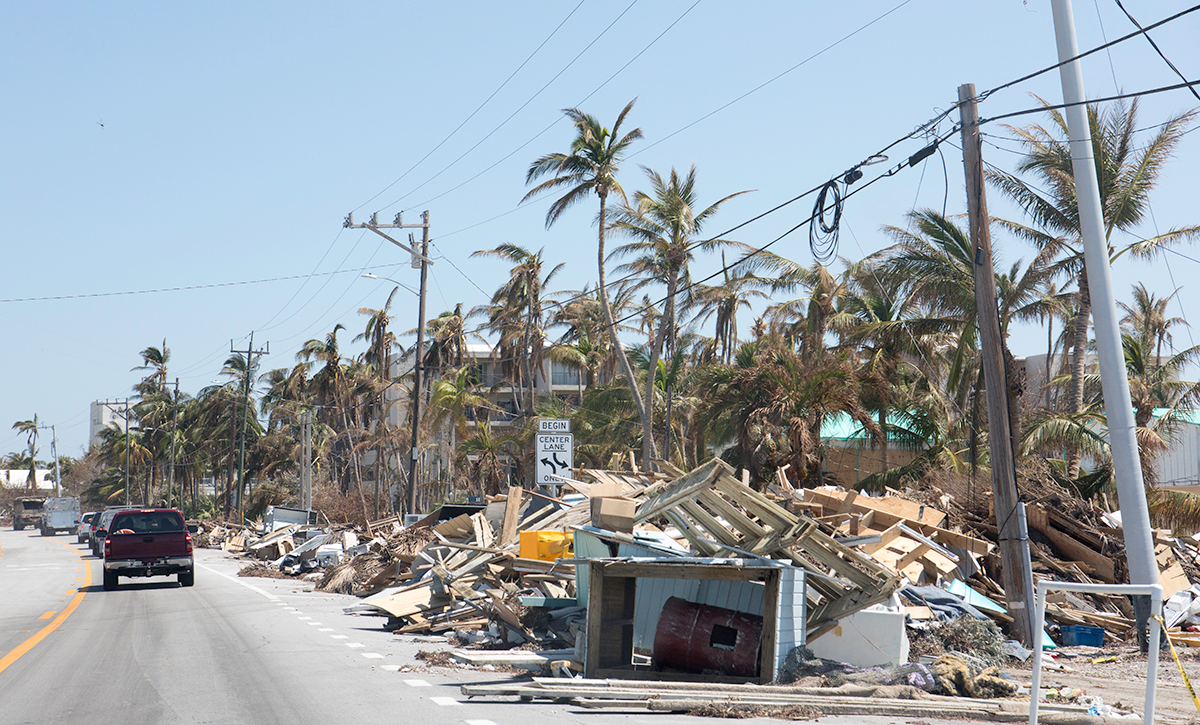It’s official: Hurricane season is here. The 2023 Atlantic hurricane season kicked off June 1 and continues through Nov. 30, bringing with it the potential for heavy winds, flooding and other conditions that can lead to power outages. If you’re like our HQ team, which is based in Houston, you know all too well how important an emergency power plan is during hurricane season.
In the wake of 2021’s Hurricane Ida, more than 1 million customers lost electricity across eight states. Five years after Hurricane Maria, Puerto Rico’s power grid is still struggling. Simply put, we’re now entering a phase of the year when emergency power planning is more critical than ever.
Whether you’re an industrial operator or a utility, read on for a quick overview of what to expect during the 2023 hurricane season — plus tips for solidifying your emergency power plan.
The Hurricane Season 2023 Forecast
Out of all the natural disasters in recorded U.S. history, hurricanes have caused the most destruction. Each year, the US Congressional Budget Office expects $9 billion in losses to commercial businesses from hurricane winds and storm flooding. In 2022, a hurricane season that scientists describe as slightly above average, tropical storms cost an astounding $118.286 billion in damage. That makes it the third-costliest hurricane season on record. (You can review the National Oceanic and Atmospheric Administration’s full 2022 summary here.)
What is NOAA predicting for the 2023 Atlantic hurricane season? Here’s a quick rundown of the agency’s outlook:
- Overall Outlook: “Near normal” hurricane season
- Named Storms: 12 to 19; these are defined as storms with winds at least 39 miles per hour
- Hurricanes: 5 to 9; these are storms with winds at least 74 miles per hour
- Major Hurricanes: 1 to 4; to be “major,” a hurricane must have winds at least 111 miles per hour
- Potential Curveball: El Niño
NOAA has 70% confidence in the range above. Meanwhile, it gives this year’s hurricane season a 40% chance of being “near normal.” Why the generous margin for error? Because of El Niño, which has been dominating weather news headlines over the last few weeks.
NOAA forecasts a high likelihood for El Niño to develop this summer, which can lower Atlantic hurricane activity. But hurricane-favorable conditions — such as warmer-than-normal sea surface temperatures in the tropical Atlantic Ocean and Caribbean Sea, and an above-normal West African monsoon — could offset El Nino’s potential influence on storm development. Hence NOAA’s 40% odds of a near-normal season.
Over the past decade, flooding from tropical storm rainfall was the single deadliest hazard related to hurricanes. Other hazards include high winds, storm surge, riptides and tornadoes.
Solidifying Your Emergency Power Plan
Hurricane season may be just five months long, but disasters can cause years — or even decades — of damage. The last ten years of natural disasters have wiped out billions of dollars worth of utility assets over a short period of time, with no sign of storm intensity decreasing.
What will your operation do when an extreme weather event strikes? Whether you’re a utility or another industrial operation, you need an emergency power plan. Start by answering the following questions:
- How much power does your operation need?
- Do you have access to backup power?
- Does your operation need additional equipment or accessories for any mobile products such as generators?
- Which internal and external emergency staff will need to respond during an emergency?
- Who is your emergency power provider?
When a disaster strikes, you need the right partner ready to jump in and help. Emergency response requires fast, flexible power generation solutions — the kind that can run reliably on various fuels, whether working in island mode or connected to the grid.
Finding the Right Emergency Power Partner
Assess each potential power partner in terms of their fleet availability and reliability. Every second without power is costly, and you’ll want to prioritize a company with a track record for turning the lights back on with the urgency the situation demands. Reliability is equally critical.
If you’re a utility, it’s important to select a partner that understands the unique power dynamics of your operation. You might also want to consider whether that emergency power can be transitioned to long-term power. In some cases, this option could save time and money.
PPG Energy responds quickly to restore power to factories, industrial sites and other facilities that typically aren’t given first priority when disaster strikes. To help organizations prevent unexpected outages, we provide fuel-flexible solutions that can run on liquid fuels more readily available during emergency situations.
We provide turnkey emergency power solutions to ensure you’re prepared 24/7/365 to keep your business powered, even in severe weather conditions. Our large equipment rental fleets can provide anything from five to 100 megawatts of power.
Whether you need emergency power now or a plan that equips you for future events, PPG Energy is ready to help. Reach out to our team today.


